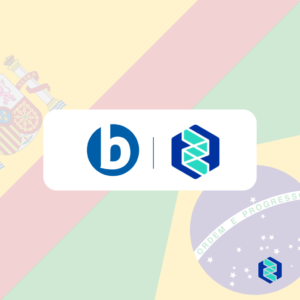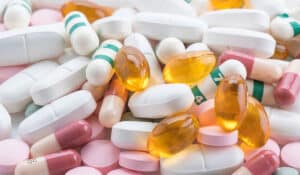Who can guarantee that a medicine is safe, and why prevent and understand adverse events? The pharmacovigilance sector works to reduce morbidity and mortality rates associated with the use of medicines, ensuring that they remain safe, effective, and are used correctly. Did you know that?
Pharmaceutical industries are highly regulated and follow strict guidelines to ensure the safety of their consumers and the effectiveness of their products. As this subject can be complex, Organex has prepared this article to explain everything you need to know about pharmacovigilance.
Check out what we’re going to talk about today:
What is pharmacovigilance?
We need to start with some basic definitions: What does pharmacovigilance mean? And what does it do?
Pharmacovigilance is a set of actions responsible for identifying, evaluating, analyzing, and preventing adverse effects or occurrences related to the use of a medicine, with the aim of guaranteeing its safety, quality, and efficacy.
Pharmacovigilance: essential for everyone
Every medicine needs to go through a series of tests and clinical trials before being launched to guarantee its safety and efficacy. However, no matter how controlled these tests are, their results are incomplete for a few reasons:
1) The population taking part in the tests does not represent the full range of biotypes, comorbidities, etc.
2) The number of patients, although important, is not enough to reveal all the reactions that can occur.
3) Not all medicines are tested on special groups, such as pregnant women, the elderly, or children.
This doesn’t imply that medicines leave the testing phase without any safety measures. However, it is necessary for them to continue to be evaluated to discover potential problems and rarer but serious adverse effects, as well as manufacturing defects or other considerations regarding the use of the product
What is the purpose of pharmacovigilance?
We can summarize the purpose of pharmacovigilance evaluations and notifications in 3 points:
1) Protecting the health and ensuring the safety of patients.
2) Evaluating the quality and safety of medical products.
3) Providing patients and health professionals with correct and up-to-date information on medical products.
Now, let’s delve into the four essential groups that play a crucial role in pharmacovigilance
Holders of drug registrations
The key word in pharmacovigilance is safety. As manufacturers of medicines, pharmaceutical industries need to ensure that their products are fit for human consumption without posing any safety risks to health.
These industries are subjected to constant tests and inspections to ensure that their products are made under the guidelines determined by the regulatory bodies.
Governments and regulatory bodies
The safety and health maintenance of the population is the responsibility of the Federal Government, guaranteed by the Federal Constitution. Articles 196 and 197 define:
• Art. 196. Health is a right of all and a duty of the State, guaranteed through social and economic policies aimed at reducing the risk of disease and other health problems, ensuring universal and equal access to services for its promotion, protection, and recovery.
• Art. 197. Health actions and services are of public relevance, and the Public Authorities are responsible for regulating, supervising and controlling them, under the terms of the law, these actions and services must be carried out directly or through third parties, as well as by individuals or legal entities governed by private law.
For this reason, the Ministry of Health works through ANVISA to ensure that the guidelines for the production of medicines are followed by all pharmaceutical industries.
Institutions and health professionals
Health professionals are responsible for prescribing and administrating medication. For them, pharmacovigilance is extremely important, ensuring that everyone is well informed about the correct use of medicines and possible risk situations that should be avoided.
In addition, health professionals are responsible for notifying the competent bodies of any occurrences related to pharmacovigilance, which we’ll go into in more detail later.
Patients and users of medicines
The main objective of pharmacovigilance is to guarantee the health of patients, which is why this sector is so important for consumers, who should always read the package leaflet and inform themselves about the use of the medicine.
The patient can and should also notify the regulatory bodies of any occurrences during the use of the medicine.
Notification in pharmacovigilance: how is it done and what is notified?
The main way in which pharmacovigilance achieves its objectives is through notifications made by health professionals, patients and drug manufacturers.
Collegiate Board Resolution (RDC) No. 406 of July 22, 2020 states that:
• Art. 3 Drug Registration Holders are responsible for Pharmacovigilance actions related to their products.
• Art. 4 The Drug Registration Holder must submit any and all information requested for Pharmacovigilance purposes within the deadline established by the health authority.
This means that the responsibility for conducting all activities related to the pharmacovigilance of its products lies with the manufacturer itself.
In other words, it is the pharmaceutical company that needs to ensure that its products are safe. ANVISA’s role is to determine and apply the law, the role of the companies is to follow it.
But what should be reported to the regulatory bodies?
1) Adverse event
When we talk about pharmacovigilance, the adverse event is what comes to mind, and it is one of the main reasons for notifications, but not the only one.
An adverse event can be defined as any negative and unintentional reaction related to the use of a medicine, whether or not it is directly related to the product.
2) Other safety findings
In addition to adverse events, pharmacovigilance also encompasses other safety findings, which may or may not cause adverse effects to the patient. Some of these occurrences include:
• Overdose – use beyond the recommended dosage, whether accidental or intentional;
• Underdose – use below the recommended dosage, whether accidental or intentional;
addiction to or abuse of the medicine;
• Off-label use – administering the medicine for use not indicated on the package leaflet;
ineffectiveness – results that do not meet expectations;
• Misuse of the medicine;
• Unexpected beneficial effects – improvement of symptoms not described in the package leaflet;
accidental exposure to the medicine;
• Occupational exposure – accidental contact with the substance in the work environment;
• Use of the medicine during pregnancy or breastfeeding period;
• Error in the storage, preparation and administration of the medicine;
• Suspicion of contamination by a pathogenic agent (bacteria, viruses and fungi) through the product.
3) Technical complaints
Technical complaints must also be notified to the manufacturer of the medicine. These complaints may encompass issues with the packaging, quality, and integrity of the pharmaceutical product.
Pharmacovigilance events are reported so that companies can become aware of, analyze, and take action regarding the product. This may involve updating the package leaflet, providing training materials for health professionals, among other measures.
This branch is crucial within the pharmaceutical industry, prompting companies to maintain dedicated teams and invest time and resources to ensure compliance with all regulations. However, it’s not an easy task.
The responsibility involves the management of reports, notifications, and events related to pharmacovigilance from consumers and health professionals. It also includes the analysis of this data and the submission of relevant information to regulatory authorities
The role of technology in pharmacovigilance
As we discuss complex data that needs to be stored, analyzed, recorded, and sent, technology plays a crucial role in this process.
ANVISA has its own systems for reporting safety and technical complaints. To submit a pharmacovigilance notification, visit the website of the agency here.
Pharmaceutical industries also employ their own tools for handling the recording of pharmacovigilance reports. These systems anonymously record and analyze notifications, ensuring they are ready for submission to regulatory agencies.
It’s not only important to report all data to ANVISA but also to maintain internal records. This ensures that necessary actions can be taken to guarantee the proper functioning of products.
Keeping this pharmaceutical industry need in mind, Organex has created SIS – Safety Information System – a comprehensive pharmacovigilance system for the industry. With SIS, you can:
• Register spontaneous reports from health professionals, consumers, or regulatory bodies, literature reports, clinical and bioequivalence studies;
• Record the patient’s narrative and data, reports of suspected and concomitant products, associated diseases, exams, and adverse events;
• Enter pregnancy data and relevant information;
• Send notifications and alerts of deadlines and dates, such as notifications to regulatory agencies, follow-ups, among others;
• Analyze causality using the Naranjo, Karch, and Lasagna algorithms;
• Issue XML reports in E2B R3 format, and much more!
Solve your pharmacovigilance demands with SIS. Access the Organex website by clicking here!



